The Best Way to Train a Puppy: Essential Steps
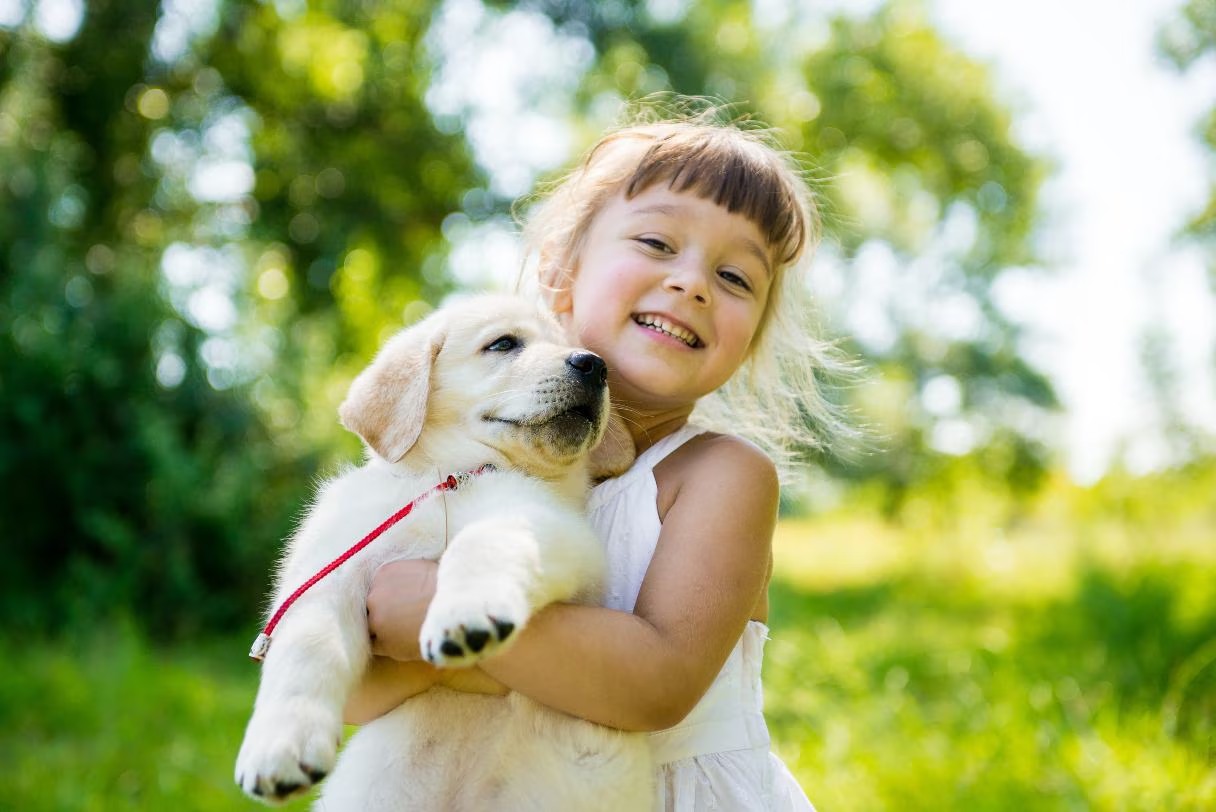
It’s impossible to fully express the joy of bringing your first puppy home! Their playful energy, endless cuddles, and innocent eyes bring a wealth of laughter and love into your life. But along with all that cuteness comes vital responsibility—guiding your puppy to become a well-mannered member of your family. Taking care of your pet from day one lays the foundation for a happy, healthy relationship.
The most effective and best way to train a puppy starts with patience, consistency, and love. This complete guide will walk you through every step of the process—from potty training to teaching basic commands—with simple, practical methods that will help your puppy grow into a confident and obedient companion.
Puppyhood is an important time for learning. It is as if your puppy is like a sponge sponge, soaking everything up around them. Consequently, you have a high chance of teaching them positive habits and preventing unwise ones. The most effective best way to train a puppy is through patience, consistency, and positive reinforcement. It is essential that your puppy sees you as a kind and helpful teacher who loves learning.
Prior to formal training, prepare a successful home environment. This means making your living space puppy-proof. Don’t let your puppy chew on anything dangerous or valuable. Providing them with a safe space is essential, such as a crate or a designated area with a bed. Puppies are best trained from the moment they arrive by creating this immediate feeling of security.
Understanding puppy learning is also crucial. Clearly defined signals and rewards are effective in getting their attention. Punishing or yelling at a puppy usually backfires, making it scared or confused. Rather than praising and rewarding negative behavior, emphasize positive behavior. Puppies can be trained most effectively with positive reinforcement.
The importance of keeping in mind that puppies are individuals cannot be overstated. Depending on the lesson, some individuals will learn faster than others, and others may require a different approach. Having a pet furry friend is both a learning and a rewarding experience, so be flexible, patient, and most importantly, have fun. These shared training experiences will strengthen the bond between you and your puppy.
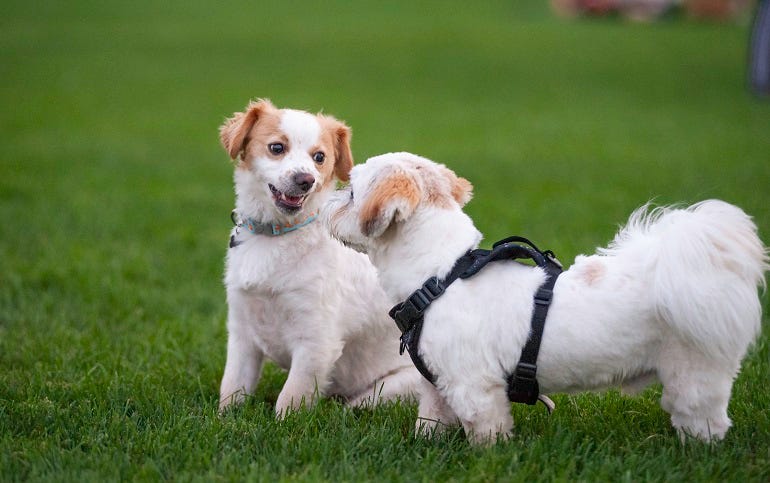
Potty Training: The Best Way to Train a Puppy to Be Clean
Potty training is often the first big challenge for new puppy owners. Getting this right early on is a crucial step in best way to train a puppy for a peaceful home.
1. Set a Schedule and Stick to It: Puppies have small bladders and need to be taken out often. Generally speaking, a puppy can hold it for about one hour per month of age (e.g., a 3-month-old puppy can hold it for about 3 hours). Take your puppy out first out first thing in the morning. After morning. After waking up from a nap. After nap. After playing. After playing. After eating or drinking. * Right before bedtime. Stick to this schedule consistently. This consistent routine is crucial for training a puppy to use the potty successfully.
2. Choose a Potty Spot: Designate a specific spot in your yard for your puppy to do his business. Always take them to this exact spot. The smell of their previous potty breaks will encourage them to use it there again.
3. Let them go potty outside: Take your puppy outside to go potty whenever possible. During this time, you will be able to watch them and praise them immediately when they leave. Say a command like ” Get potty!” as they use the bathroom.
4. Praise and Reward Immediately: The moment your puppy finishes getting to the bathroom in the right spot, give them lots of praise and a small, tasty treat. Treats must be immediate in order for the reward to be connected to the action. Positive reinforcement is a cornerstone of the most effective way to train a puppy.
5. Clean Accidents Thoroughly: Accidents will happen. It’s part of puppyhood. When an accident occurs indoors, refrain from scolding or punishing your puppy. They won’t understand. Instead, clean the spot thoroughly with an enzymatic cleaner designed to remove pet odors. This removes the scent that might encourage them to return to the same place again.
6. Crate Training Helps: A crate can be a powerful tool for potty training. Natural instincts make puppies avoid soiling their sleeping areas. We will discuss crate training further soon, but please note that it’s crucial part of the most effective way to train a puppy quickly.
7. Watch for Signals: Learn your puppy’s signals to be out. Some of these behaviors include sniffing around, circling, whining, or heading towards the door. When you see these signs, remove them immediately. Being observant is an essential part of the most effective way to train a puppy.
Puppy Crate Training: The Best Way to Ensure Your Puppy’s Safety and Comfort
Training your puppy in a crate is more than just keeping him contained. It’s about providing them with a safe and comfortable den where they can rest and feel secure. It also helps immensely with potty training and managing your puppy when you can’t actively supervise them. Using a crate correctly is the most effective way to train a puppy to be calm and independent.
1. Getting the Right Crate: Ensure the crate is large enough for your pup to stand up, turn around, and lay down comfortably. If it’s too big, they might use one end as a potty area. You can get a larger crate with a divider that you can move as your puppy grows.
2. Make it inviting: Place soft bedding, a favorite toy, and a chewing toy inside the crate. Positive reinforcement is what you want in the crate.
3.Introduce the crate slowly: Never force your puppy into the crate. Start by leaving the door open and letting them explore. Treats can be thrown inside to encourage them to enter.
4. Short, Positive Stays: Once your puppy is comfortable coming in, close the door for very short periods (a few seconds to a minute) while you are still nearby. Praise them and treat them when you open the door. Gradually increase the time they spend in the crate. This gentle introduction is the most effective way to train a puppy to love their crate.
5. Feed Meals in the Crate: Feeding your puppy their meals inside the crate with the door closed helps them associate the crate with positive things.
6. Ignore Whining (Mostly): Your puppy might whine when left in the crate. As long as you know they don’t need to take them to the bathroom and are safe, ignore the whining. Getting to them when they complain teaches them that whining gets your attention. Only let them out when they are quiet. This teaches independence, which is the most effective way to train a puppy for quiet time.
7. Never Use the Crate for Punishment: The crate should always provide a safe and happy environment for your dog. Punishing your puppy with it will make him fear it. In this manner, the purpose of the training program is defeated and the puppy is not properly trained.
8. Overnight Crate: Once your puppy is comfortable with short stays, you can gradually introduce overnight crating. Ensure they use the bathroom before bed. If they wake up at night, take them straight outside for a potty break and return them to their crate.
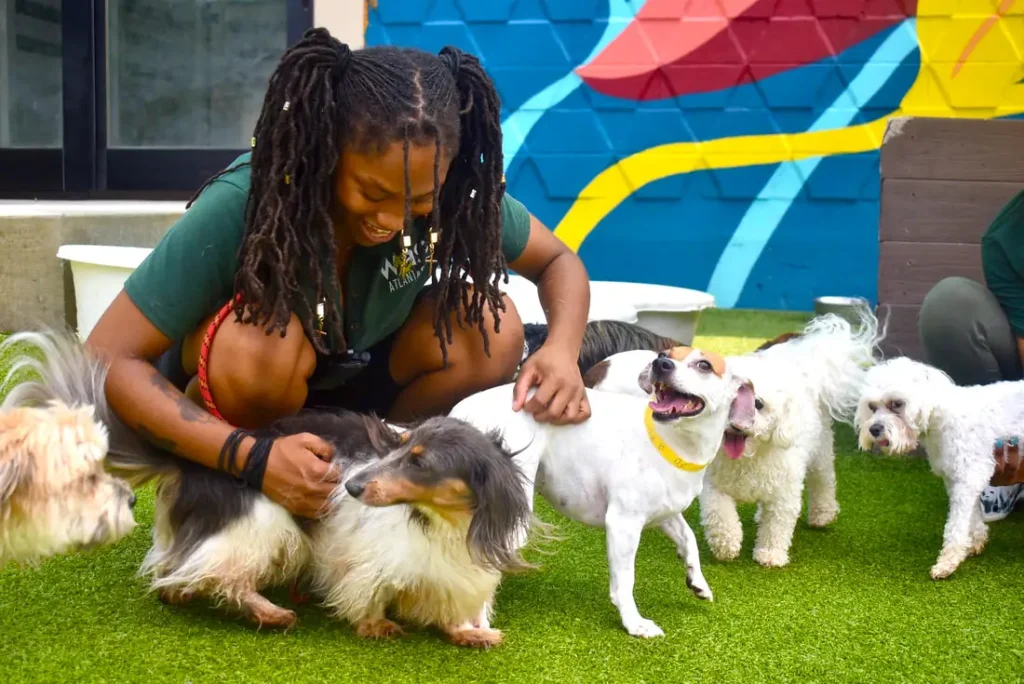
Socialization: The Key to a Puppy’s Happiness
The goal of socialization is to help your puppy become comfortable with new sights, sounds, people, and other animals. It takes time for a puppy to become a confident, friendly dog once it has been well socialized. An important element of training a puppy is to make sure that it is well-adjusted to its surroundings.
1. The Critical Socialization Window for Puppies : Typically, puppies need to be socialized between the ages of three to sixteen weeks. The actions they take during this time are shaped by every positive experience they have.
2. Getting to Know New People : Invite friends and family to visit, ensuring they interact with your puppy gently and positively. Offer treats when new people approach.
3. Expose him to New Sounds: Play sounds like doorbells, vacuums, city noises, or even baby crying at low volume. Gradually increase the volume as your puppy gets more comfortable. Consequently, they aren’t startled by everyday sounds.
4. New Places and Surfaces: Take your puppy to different safe places, such as parks, pet stores (if they are fully vaccinated), and even other rooms in your house with varying floor textures. Let them walk on grass, pavement, carpet, and wood.
5. Positive Interactions with Other Dogs: Once your puppy has had their core vaccinations, arrange supervised playdates with calm, vaccinated, friendly adult dogs or other puppies. Puppy classes are excellent for this. Ensure these interactions are always positive. A difficult experience can create fear. This type of controlled exposure is the most effective best way to train a puppy to get along with other dogs.
6. Handle Them Gently: Get your puppy used to being touched all over their body – including their paws, ears, mouth, and tail. The next time the pet needs to visit the vet or groomed, it will be easier to do so. Pair handling with praise and treats.
7. Always Make it Positive: Socialization is about creating positive associations. Never force your puppy into a fearful situation. If they seem scared, gently remove them and try again later with a less intense version of the experience This gentle approach is the most effective best way to train a puppy.
8. Be sure to keep it fun: Getting your puppy used to socialization should be fun for him or her. Short, happy sessions are better than long, stressful ones.
Basic Commands: The Best Way to Train a Puppy with Essential Skills
Getting your dog to obey basic commands like “sit,” “stay,” “come,” and “leash walking” is crucial to safety. Puppies must learn these commands as a foundation for their training. They will help your puppy become a polite and well-behaved member of the family.
-
“Sit” is what you should do: Hold a Treat near your puppy’s nose. Slowly nose. Slowly move the treat up and back over their heads. Their nose will follow the treat, and their bottom will naturally sink into the seat. As-seat. As their bottom touches the ground, they say “Sit!” Give them a treat and praise. * Practice in short, fun sessions throughout the day. This simple method is the most effective best way to train a puppy to sit quickly.
2. “Come” (Recall): This is a life-saving command. Start command. Start in a quiet, enclosed area. Get area. Get low and call out your puppy’s name, then say, “Come!” When “Come!”
When they get to you, praise them lavishly and give them a super tasty treat. Never treat. Never use “come” when you are angry or to end something fun. You want them to associate “come” with positive things. This positive association is the most effective way to train a puppy for reliable recall. * Gradually increase distractions and distances as they improve.
3. Having your puppy lie down in a sitting position is a crucial part of staying. Say position. Say “Stay” and hold up your hand like a stop sign. Take sign. Take one small step back. If they stay, step back and praise them, treating them well. Gradually well. Gradually increase the distance and duration. If they move, gently return them to the “sit” position and start over Patience is key. This is the most effective best way to train a puppy to stay for a long time.
4. Leash Walking: Start by having your puppy get used to wearing a collar or harness for short periods inside. Attached inside. Attaching the leash and letting them drag it around the house under supervision. Starting supervision. Start with very short walks in a quiet area. When area. When your puppy pulls up, stop moving. Start walking again when the leash is loose. * Reward them with treats when they behave nicely alongside you on a loose leash. Avoid pulling constantly. This consistent method is the most effective best way to train a puppy to walk politely.
Bite Inhibition: The Best Way to Train a Puppies to Be Gentle
This is how puppies explore the world, and it is normal for them to use their mouths for this purpose. However, teaching them to bite softly (bite inhibition) and eventually not at all on human skin is vital. This gentle approach is the most effective best way to train a puppy for a soft mouth.
1. Yelping: When your puppy bites too hard during play, let out a high-pitched yelp, like a puppy would. This often startles them.
2. End Play: Pause for 10-20 seconds. Leaving the room or turning away from them is the best option. Eventually, they will learn that biting too hard will stop the fun.
3. Redirect to Toys: When they try to chew on your hand, offer them a suitable chewing toy. Praise them when they chew on the toy instead of you. This teaches them what it is okay to chew on.
4. Consistency is Key: Everyone in the family needs to follow these rules consistently. If some people allow biting and others don’t, your puppy will confuse.
5. Avoid Hand Wrestling: Refrain from encouraging rough play with your hands. This can accidentally teach them that hands are toys to bite.
6. Offer Plenty of Chewing Toys: Puppies need to chew. Provide a variety of safe, appropriate chewing toys to satisfy their natural urge. This reduces their need to chew on you or your furniture.
7. When to Seek Help: If your puppy’s biting is very persistent, aggressive, or not improving with these methods, consult a professional dog trainer or behaviorist.
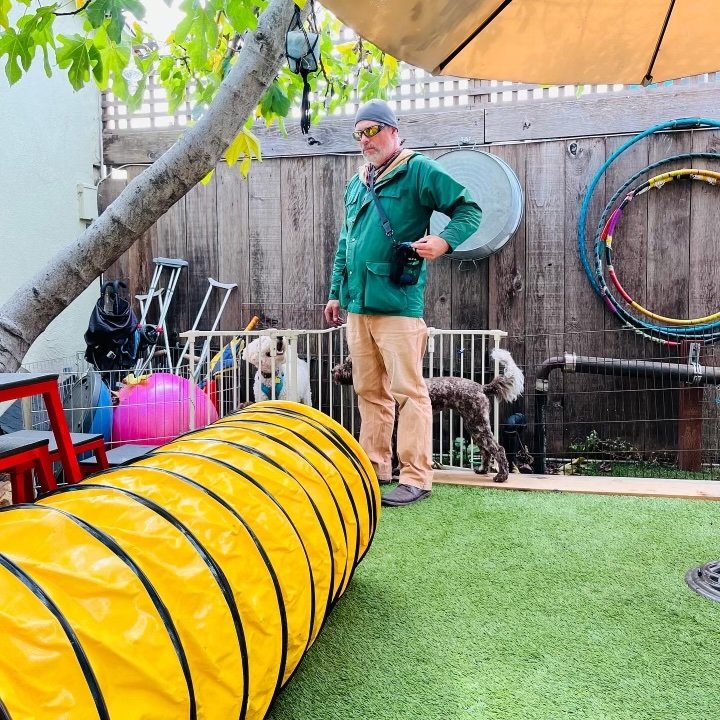
Addressing Common Puppy Behavior Issues: The Best Way to Train a Puppy for Good Manners
Puppies, like toddlers, sometimes display behaviors we don’t want. Knowing the most effective best way to train a puppy through these common issues is crucial.
1. Chewing Solution: Puppy-proof your home! Remove tempting items. Provide a variety of attractive chew toys. Redirect chewing onto appropriate toys whenever you catch them chewing on something wrong. You can also use bitter-tasting sprays (like bitter apple) on items you don’t want them to chew on Chewing is a natural behavior for puppies, especially during teething. You need to give them the appropriate outlets.
2. Jumping Up: * Solution: When your puppy jumps, turn your back and ignore them. Only give attention (praise, treats, petting) when all four paws are on the floor. If they jump on guests, ask guests to ignore them until they are calm. This teaches them that jumping doesn’t get attention. The most effective best way to train a puppy is to remove rewards for unwanted behavior.
3. Barking: * Solution: Identify why your puppy barks (boredom, attention-seeking, alarm). For attention-seeking, ignore them until they are quiet, then reward. Exercise and mental stimulation are the best ways to combat boredom. For alarm barking, acknowledge the sound, then redirect their focus to you with a “sit” or “look at me” command, followed by a treat. Never reward barking.
Advanced Tips for the Best Way to Train a Puppy
Once your puppy masters the basics, you can expand their skills and strengthen your bond.
1. Consistency is Always Key: Even with advanced training, consistency remains the most critical factor. Everyone in the household should use the same commands and follow the same rules. This makes it easier for your puppy to understand.
2. Keep Training Fun and Positive: Never make training a chore. Keep sessions short and positive, and end on a good note. Your puppy should always look forward to training with you.
3. Practice in Different Environments: Once your puppy understands a command in a quiet environment, practice it in places with more distractions. This helps generalize the command so they will respond anywhere.
4. Mental Stimulation is Important: Beyond physical exercise, puppies need mental stimulation. Puzzle toys, interactive games, and learning new tricks keep their minds active and prevent boredom, which can lead to unwanted behaviors.
5. Puppy Classes: Enrolling in puppy classes offers numerous benefits. It provides structured socialization, teaches you how to train a puppy effectively from certified professionals, and strengthens the bond between you and your puppy. It’s a great way to learn how to train a puppy with expert guidance.
6. Be Patient: Puppy training is a journey, not a race. There will be good days and bad days. Don’t get discouraged by setbacks. Celebrate small victories and remember that every consistent effort moves you closer to having a well-behaved companion.
7. Reinforce Good Behavior: Don’t just correct bad behavior. Actively look for opportunities to praise and reward your puppy when they are doing something right, even if it’s as simple as lying quietly or playing gently with a toy. This positive reinforcement reinforces the behaviors you want to see more of.
8. Understand Body Language: Learning to read your puppy’s body language will help you better understand their needs and fears. This enables you to respond appropriately and build a stronger, more trusting relationship.
Conclusion
Taking care of your puppy is one of the most rewarding parts of dog ownership. Understanding the most effective Best Way to Train a Puppy is the key to success. The most effective Best Way to Train a Puppy involves patience, positive reinforcement, consistency, and early socialization. These steps help build a confident and happy companion. Since every puppy is unique, being flexible in your approach is essential to finding the most effective way to teach a puppy that works for your furry friend. Training fun and engaging is also part of the most effective way to teach a puppy. This makes the process enjoyable for both you and your puppy. The effort you invest during these early months is the foundation of the most effective Best Way to Train a Puppy. This creates a strong bond and a lifetime of happy memories. Your puppy will appreciate your kindness and understanding by following the most effective best way to train a puppy.
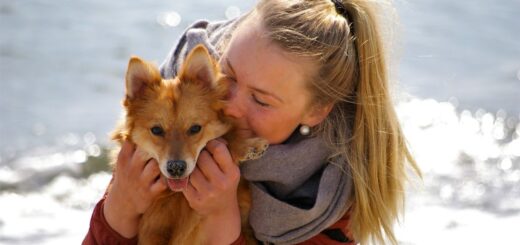

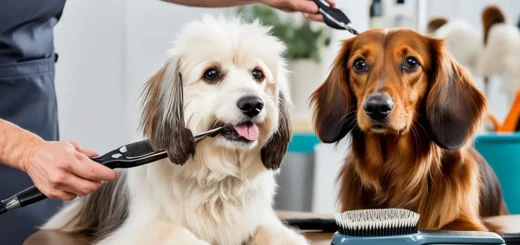
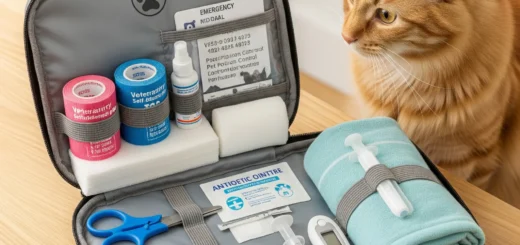
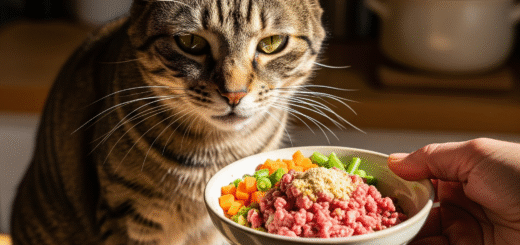

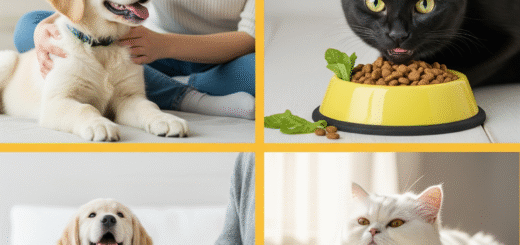









Recent Comments